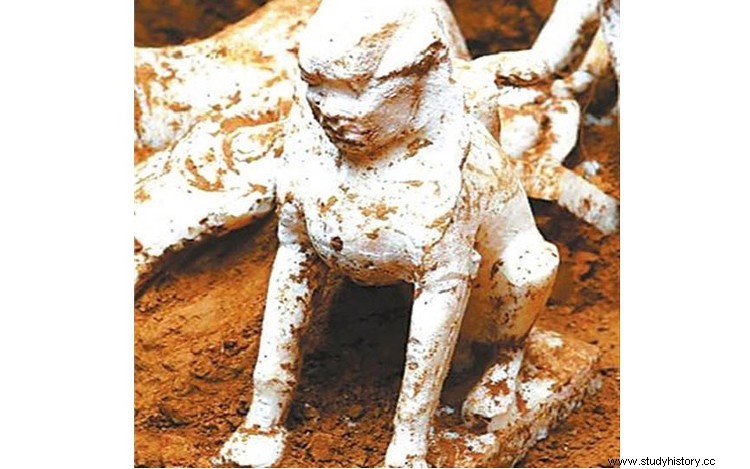It seems more and more difficult than archaeology offers us a find from the dimension of Troy, the tomb of Tutankhamun or the Chinese terracotta warriors. But there is no shortage of schliemans and carters who do their work in a less mediatic way and achieve results as important for science as those mentioned. By the way, since I mention China , the last of them has taken place precisely in that country and is quite surprising despite its modesty.
And it is that an archaeological mission of the Institute of Cultural Relics and Archeology of Ningxia that worked on a thousand-year-old tomb near the city of Guyuan (Ningxia Hui region) he has just found a rare piece:a marble statuette in the shape of a sphinx , a very rare topic in that part of the country and in Asia in general.

It is a piece of small size , thirty-six centimeters high by twenty-one long and thirteen at the base. Despite the wear suffered, it is clearly seen that it represents a sphinx, that is, a mythological being half human half animal , with the face of what looks like a person and the body of a lion sitting on its hind legs. In case someone is not clear yet, the same concept that can be seen in Egypt, next to the pyramids of Giza, although on a considerably larger scale of course (73 meters long by 21 meters high).
The Chinese sphinx is made of white marble and it was part of a funerary trousseau in which there were also eight more figures of warriors, camels and lions of the same material. They were in one of the twenty-nine burials in the area that have been excavated throughout 2015, in a hurry because the construction of a water supply and treatment plant for the local population is planned. The campaign has made it possible to recover more than one hundred and a half pieces , between sculptures, ceramics, bronzes and irons.

The marbles, extracted last November, show a pretty good conservation and only some minor damage is visible on the face of the sphinx. For the rest, they are of excellent workmanship, according to Fan Jun , head of the team of archaeologists, since the tomb belonged to Liu Jun and his wife , a wealthy couple who lived during the Tang dynasty (618-907 AD), whose capital was present-day Xi'an.
Fan Jun explains that“the sculptures have a style with typical Western characteristics and it is considered rare in China at that period” , as is the stone used, rare in the north of the country. Something that, therefore, could shed light on the development of trade during the Tang period; after all, Ningxia was part of the famous Silk Road .
